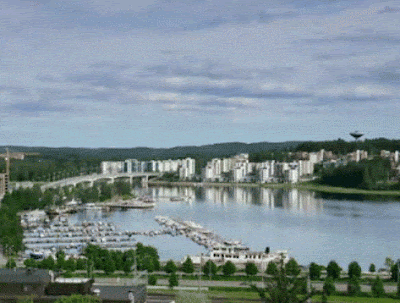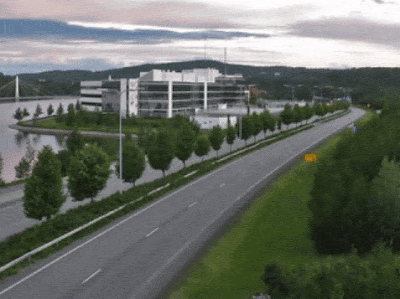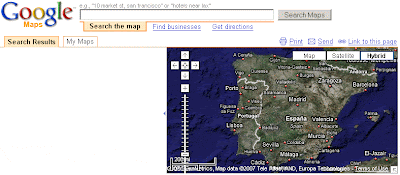Award
From Seattle, US, the great Suxmonkey!
And from a tropical island in US, the fantastic Graviplana!
(And there would be many more people to add)
The code for the badge can be found in MeAndMyDrum by Mark, whose idea this award is.
 The upcoming Human Development Report entitled Fighting climate change: Human solidarity in a divided world, was launched today (27 November 2007) in Brasilia, Brazil. The launch event was paralleled by multiple launches in cities around the world.
The upcoming Human Development Report entitled Fighting climate change: Human solidarity in a divided world, was launched today (27 November 2007) in Brasilia, Brazil. The launch event was paralleled by multiple launches in cities around the world. World map indicating Human Development Index (2007)
World map indicating Human Development Index (2007)San Francisco, 27 November 2007—The United States has a unique responsibility to“climate-proof” its growth not only to protect Americans but also to prevent catastrophic reversals in health, education and poverty reduction for the world’s poor, according to the Human Development Report (HDR) on climate change launched here today.As the US prepares to join global leaders in Bali in December to negotiate future action against climate change, the United Nations Development Programme’s (UNDP’s) HDR, entitled Fighting climate change: Human solidarity in a divided world, stresses that a narrow ten-year window of opportunity remains to act.If that window is missed, temperature rises of above four degrees Fahrenheit could see an extra 600 million people in sub-Saharan Africa go hungry, over 200 million more poor people flooded out of their homes and an additional 400 million exposed to diseases like malaria and dengue fever.“The carbon budget of the 21st Century—the amount of carbon that can be absorbed creating an even probability that temperatures will not rise above four degrees—is being overspent and threatens to run out entirely by 2032,” says Kevin Watkins, lead author and Director of the Human Development Report Office, “and the poor—those with the lightest carbon footprint but the least means to protect themselves—are the first victims of the developed countries’ energy rich lifestyle.”As the world’s largest economy and one of the biggest CO2 emitter, the US has a responsibility to take the lead in balancing the carbon budget by cutting emission by 80 percent by 2050, according to the Report, in addition to contributing to a new US$86 billion annual global investment in substantial international adaptation efforts to protect the world’s poor.
Full Press Release (PDF)
Brasilia, 27 November 2007—Developed countries are failing to meet their targets forcutting greenhouse gas emissions under the Kyoto Protocol, according to the UnitedNations Development Programme’s Human Development Report (HDR) launched here today. The Report calls for urgent action to align energy policies with a commitment to cut greenhouse gas emissions by at least 80 percent by 2050.With governments preparing for a key meeting in Bali, Indonesia to negotiate a successor to the current Kyoto Protocol, the 2007/2008 HDR, entitled Fighting climate change: Human solidarity in a divided world, notes that most OECD countries are off-track for the Kyoto targets. It highlights the discrepancy in many EU countries between politically agreed targets for cutting greenhouse gas emissions and current energy policies. The authors argue that rich countries are driving an ecological debt crisis which will impact earliest—and hardest—on the world’s poor.While developing countries account for a growing share of global emissions, rich countries still lead in running up the carbon debt. If each poor person on the planet generated the same emissions as an average European, four planets would be needed to safely cope with the pollution, says Fighting climate change. That figure rises to seven if the benchmark is the emissions of an average Australian and nine for a North American or Canadian.“Governments of rich countries negotiating the post-2012 framework to succeed the Kyoto Protocol need to take the lead and align credible national carbon emissions targets with any multilateral agreements around a ‘global carbon budget’,” says Kevin Watkins, lead author and Director of the Human Development Report Office. “We do not need high level communiqués reminding us that we have an urgent problem—we need solutions and practical measures to cut emissions.”
Full Press Release (PDF) ENG
Full Press Release (PDF) PT
Posted by
Luís Alves
on
27.11.07
![]()
Labels: economia, english, environment, news
O défice
Posted by
Luís Alves
on
21.11.07
![]()
Labels: descentralização, economia, modelo português, news, portuguese
Posted by
Luís Alves
on
20.11.07
![]()
Labels: descentralização, modelo português, news, portuguese
 Google announced the launch of Google Transit trip planner in Europe. Now you can plan your entire journey using public transportation. So far Google has information for the following places and transport companies:
Google announced the launch of Google Transit trip planner in Europe. Now you can plan your entire journey using public transportation. So far Google has information for the following places and transport companies:
Posted by
Luís Alves
on
17.11.07
0
comments
![]()
Labels: english, environment, internet technologies, modelo finlandês, modelo português, news, planeamento/transportes, urbanismo







Posted by
Luís Alves
on
11.11.07
![]()
Labels: english, jyvaskyla, korpilahti, modelo finlandês, urbanismo

Posted by
Luís Alves
on
9.11.07
![]()
Labels: english, internet technologies, modelo português, news
There’s no need to rehash what we already know. The Arctic is melting. It’s a fact that we are going to have to come to grips with. Shipping lanes are being changed, animals and natives are being displaced, and ice is disappearing(...)Full text: greenoptions.com
So it’s no surprise to see five of the nations likely to be hardest hit up north — Sweden, Finland, Denmark, Norway and Iceland — come together and issue a cry for help.
Posted by
Luís Alves
on
1.11.07
![]()
Labels: english, environment, modelo finlandês, news
A full-page advertisement in Tuesday's Helsingin Sanomat by Neste Oil (which perhaps wants to be to biodiesel what Nokia is to mobile phones) promoting its biodiesel as an environmentally friendly option was immediately disputed by Greenpeace. According to the page advertisement, biodiesel reduces emissions of greenhouse gases.
Read more
 Stockholm, Sweden - Sweden's Greenpeace organisation held a demonstration on Tuesday at the headquarters of the Swedish oil company OKQ8 to protest plans to buy bio diesel fuel produced by Neste Oil using tropical palm oil as the raw material.
Stockholm, Sweden - Sweden's Greenpeace organisation held a demonstration on Tuesday at the headquarters of the Swedish oil company OKQ8 to protest plans to buy bio diesel fuel produced by Neste Oil using tropical palm oil as the raw material.
Posted by
Luís Alves
on
1.11.07
![]()
Labels: english, environment, modelo finlandês, news, planeamento/transportes
 Unless specifically stated otherwise this work is licensed under a Creative Commons License.
Header image by nick_russill
This weblog expresses only author's personal opinions, not the views of any other person or organisation.
This blog is bilingual - Blog languages: english | portuguese | (finnish)
Unless specifically stated otherwise this work is licensed under a Creative Commons License.
Header image by nick_russill
This weblog expresses only author's personal opinions, not the views of any other person or organisation.
This blog is bilingual - Blog languages: english | portuguese | (finnish)